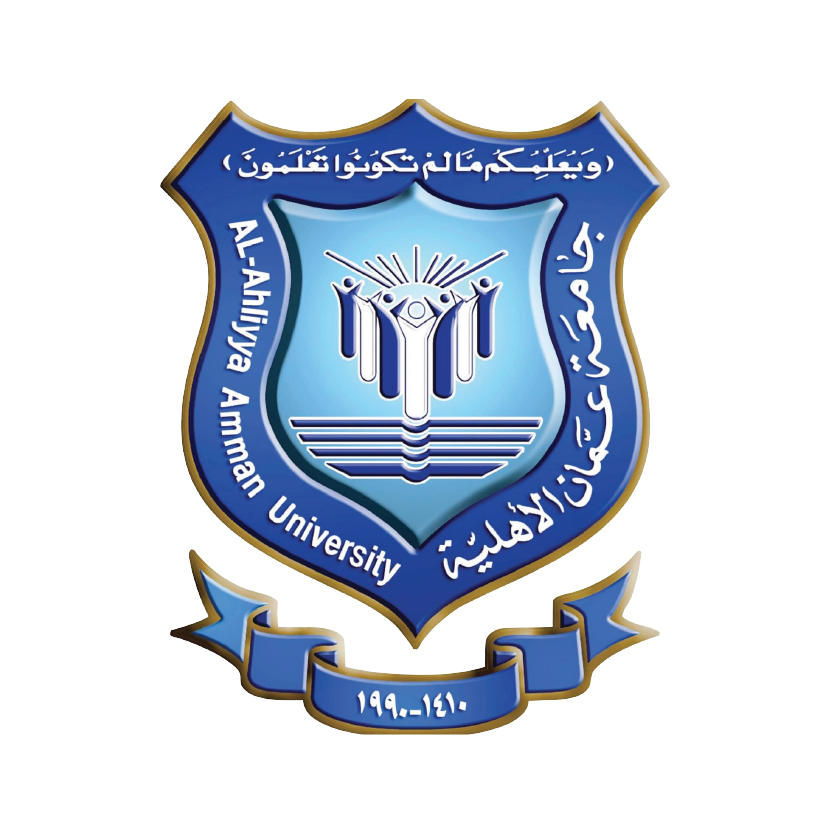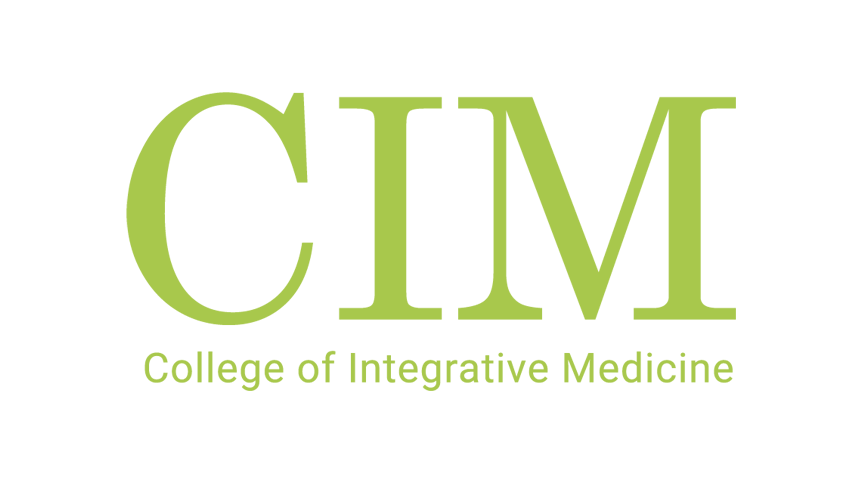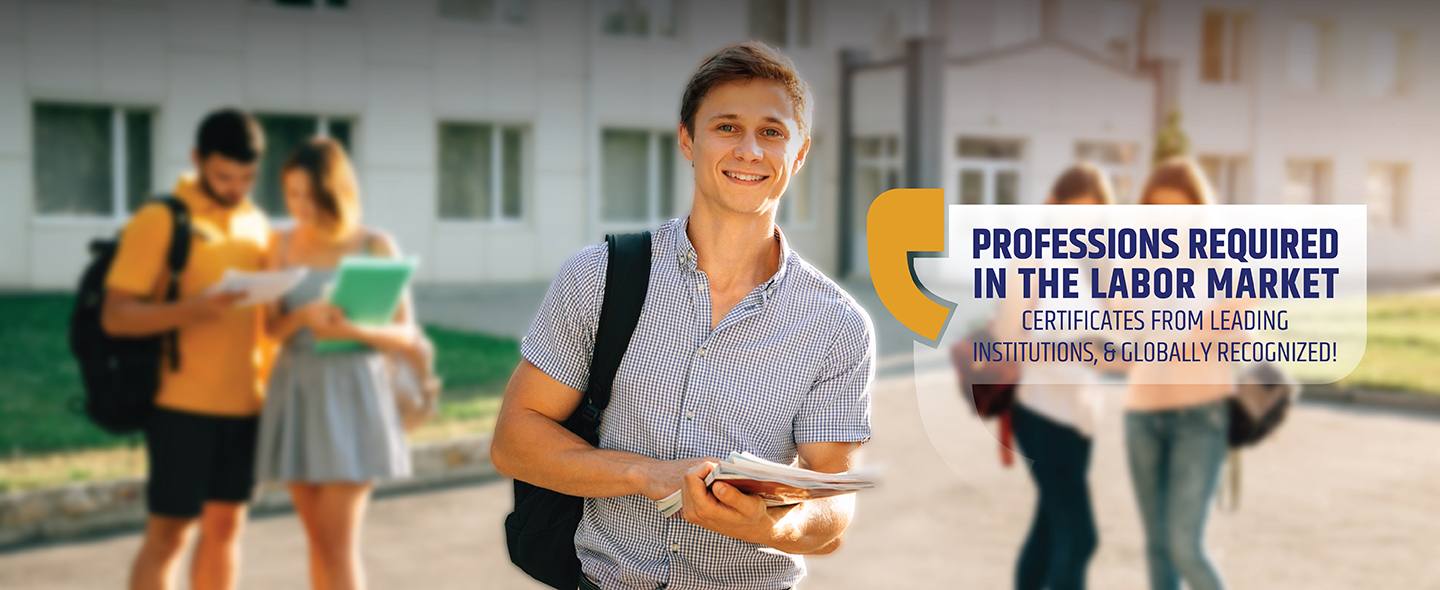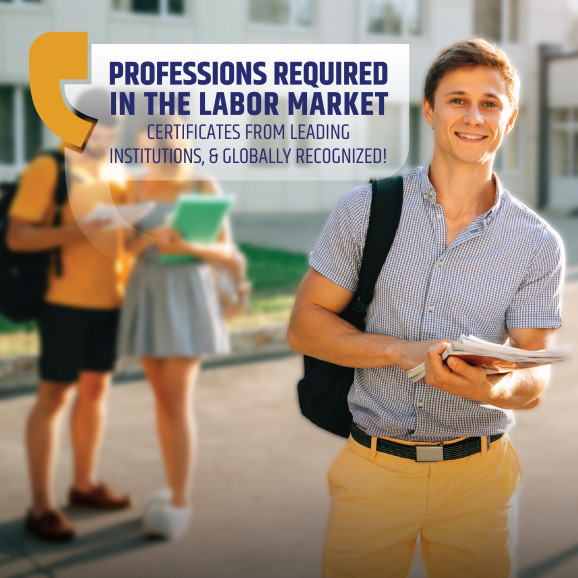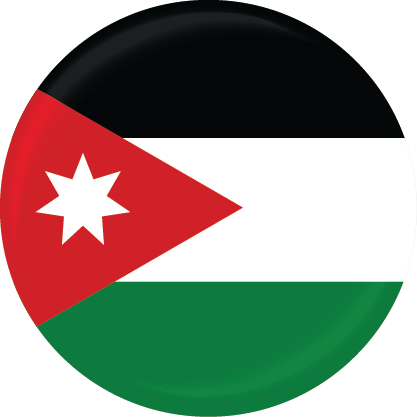Register Now! Please, fill in your personal details and we will contact you shortly
Massage, Functional Mobilization and Rehabilitation - Advanced
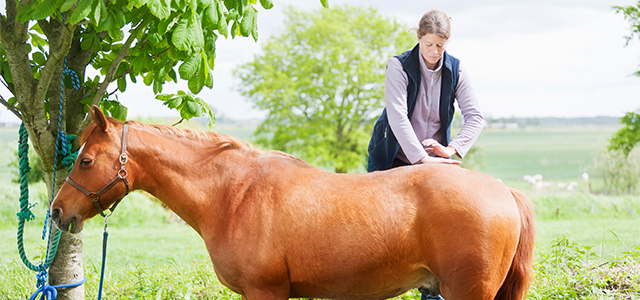
Audience
About the program
A more comprehensive, practitioner level course with an additional focus on rehabilitation.
Massage is an umbrella term for a wide range of soft tissue techniques. Massage can be defined as the manipulation and mobilization of the soft tissues of the body. Massage Therapy can be defined as: The scientific manipulation of the soft tissues of the body for the purpose of normalizing those tissues. Sports massage is a form of massage therapy which utilizes certain techniques to help obtain and maintain maximum performance and physical conditioning with less chance of injury or pain.
Soft tissue mobilization focuses on restoring movement to the skin, connective tissue, ligaments, tendons, and muscles with the goal of modulating pain, reducing inflammation, improving tissue repair, increasing extensibility, and improving function. Joint mobilization and manipulation provide important diagnostic and therapeutic approaches for addressing musculoskeletal issues in equine sports medicine and rehabilitation. Joint mobilization is characterized as non-impulsive, repetitive joint movements induced within the passive range of joint motion with the purpose of restoring normal and symmetric joint range of motion, to stretch connective tissues, and to restore normal joint end-feel.
Myofascial release is a manual therapy technique often used alongside massage. The technique focuses on pain and dysfunction arising from the myofascial tissues — vast network membranes, connected throughout the body, that wrap, connect and support the muscles and all other structures within the body.
This course takes the student through a detailed level of anatomy and physiology including the major physiological systems as well as an in-depth review of the musculoskeletal system as relevant to the practitioner, at a level of detail necessary to ensure safe and effective practice.
The muscular system is also covered in significant detail, looking at the individual muscles of the horse, focusing in on the major muscles, their specific location, origin, insertion and innervation, and critically, their function. Particular focus is given to hands-on palpation to ensure that the student develops true aptitude and confidence in working with, and understanding the equine body. A genuine and deep understanding of what the therapist has their hands on leads to a significantly better understanding of what is happening with the body, and therefore a significantly better ability to intervene appropriately, bringing about the best results.
This course also covers the main equine joints and the distal limb anatomy, helping to ensure that the student can correctly identify important structures in their patient. A key element of this programme is to bring anatomy to life and enable students to feel genuinely confident applying this knowledge within their practice.
This programme also covers biomechanics, locomotion and dynamic observation skills, ensuring that the student develops a knowledge and appreciation of how the horse moves, how he should move correctly and how that movement can become dysfunctional. Practical sessions focus on developing excellent dynamic observations skills to support the student’s future practice.
Equine therapeutic massage, or sports massage, employs a number of techniques first developed in humans and has been reported to increase range of motion and stride length, reduce activity of nociceptive pain receptors, and reduce physiologic stress responses.
The main types of sports massage techniques include:
• Effleurage: gentle stroking to increase circulation and stimulate nerves.
• Petrissage: also referred to as kneading, this stretches muscles and eases tension.
• Friction: separates muscle fibers and helps to break down scar tissue.
Mobilization and stretching is hugely beneficial for performance and leisure horses, improving range of motion and providing effective pain relief for short, tight, stiff or sore muscles. Each muscle in the body spans one or more joints, dictating the movement for that joint.
There are 3 mains types of mobilization:
1. Active Stretching
Active stretching involves holding a pose to utilize a targeted muscle group.
For example, an overhead stretch can target your shoulders, chest, forearms, and lats. Active stretching is commonly performed as a warm-up to prepare the muscles for exercise.
2. Passive Stretching
This type of stretching is best for balance enhancement and flexibility. For example, stretching your hamstrings by bending over and stabilizing your legs can foster flexibility by staying in that position for a set period of time. Passive stretching is commonly utilized in Yoga.
3. Dynamic Stretching
Dynamic stretching is achieved on movements with momentum, rather than a static stretch. An example of dynamic stretching would be moving your arm in a full rotation to stretch your shoulder repeatedly. Each pass is a stretch to activate the muscles and increase flexibility.
During this training you will learn a complete massage session with work on the points of tension through a structured session and taking into consideration each muscle area. Through touch, whether it's through deeper or relaxing work, your hands will develop a new understanding of the horse and a very special way of listening to it.
Complete massage and tension areas this module one addresses a complete massage of the horse zone by zone by approaching each muscle and working on the tension points with deep but relaxing structural techniques.
This will give us a complete reading of the horse and the targeted areas to follow and maintain in a more specific way.
• Conduct of the massage session => Where to start?
• Contraindications indications => in which cases a horse can benefit from a massage? When NOT to massage a horse? When to refer the horse to another professionals?
• Principles and benefits of massages => principles of neurology parasympathetic vs sympathetic nervous system.
Learning this complete massage sequence will build the basic structure in how to approach muscles to learn to feel and visualize them.
The programme also covers equine disease, disorder, illness and injury, ensuring that the student develops a wide ranging knowledge of issues potentially affecting their clients horses, and a broad understanding of a range of conditions that they may encounter in their practice.
This programme will then cover in detail the benefits of sport massage, how and when it can be used appropriately to benefit wellbeing and performance. The various massage techniques will be discussed in detail, their specific uses, indications and contraindications reviewed, and how to apply them safely and effectively. Practical hands-on tuition is designed to ensure that the student develops aptitude in the performance of the various massage techniques, and is able to deliver them safely, skillfully and effectively.
This course also covers stretching and relevant stretching techniques, their uses, indications and contraindications, again with a focus on the student developing correct and effective techniques through hands-on training.
This course will also cover in mobilization techniques, the theory, efficacy and evidence base for mobilizations, various techniques, their uses, indications and contraindications, safe and effective performance of mobilization techniques.
In addition to traditional soft-tissue techniques, this programme also introduces students to fascia and the role it plays in the healthy functioning of the body. Direct and indirect myofascial release techniques are discussed, including the benefits and effects of each approach. Again, practical hands-on tuition will enable the student to develop proficiency with these skills.
This programme also covers key concepts in equine rehabilitation, exercise and exercise prescription, enabling the student to understand their potential role in returning their patient to full health and performance.
This programme is designed to provide the student with a solid grounding in therapeutic equine sports massage and rehabilitation, enabling them to offer a significant level of support within the equine field.
 Certificates
Certificates
(Diploma) Certificate from Al-Ahliyya Amman University – the Training and Consulting Department, the International College of Integrative Medicine (CIM), Dubai Racing Club, Dubai Equestrian Club and the International Organization for Complementary Medicine (CMA) located in London, UK, which qualifies the graduates to work all over the world.
Syllabus
Day / Lecture | Topics |
Day 1 AM Lecture 1 Lecture 2 Lecture 3 Lecture 4 | Welcome, introductions and course overview Main Physiological Systems Respiratory system Skeletal system The Equine Skeleton - Classroom The axial and appendicular and skeleton The joints Bony landmarks |
Day 1 PM Lecture 5 Lecture 6 | The Equine Skeleton – Hands on Practical Palpation of bony landmarks and joints Palpation and marking up of the equine skeleton |
Day 2 AM Lecture 7 Lecture 8 | Main Physiological Systems - Classroom endocrine system the muscular system The Equine Muscular System – Classroom Individual muscles |
Day 2 PM Lecture 8 | The Equine Muscular System – Hands on Practical Palpation and marking up of anatomy |
Day 3 AM Lecture 9 Lecture 10 Lecture 11 | Main Physiological Systems reproductive systems digestive system Soft Tissue Pathologies Functional Anatomy - Classroom |
Day 3 PM Lecture 12 Lecture 13 | Functional Anatomy - Practical Functional anatomy observations and discussions Soft Tissue Pathologies |
Day 4 AM Lecture 14 Lecture 15 | Main Physiological Systems urinary system lymphatic system The Equine Distal Limb - Classroom The equine distal limb |
Day 4 PM Lecture 16 | The Equine Distal Limb – Hands on Practical Palpation of the equine Distal Limb |
Lecture 17 | Recap muscles |
Day 5 AM Lecture 18 | Main Physiological Systems integumentary system nervous system cardiovascular system |
Day 5 PM Lecture 19 | Painted Horse – Hands on Practical |
Day 6 AM Lecture 20 | Introduction to Massage - Classroom Benefits and indications for massage Contraindications for massage The main massage techniques, specific uses, indications and contraindications: Effleurage Petrissage Friction Tapotement |
Day 6 PM Lecture 21 | Introduction to Massage – Practical Demonstration and practice of techniques |
Day 7 AM Lecture 22 Lecture 23 | Introduction to stretching Types of stretches, uses, indications and contraindications Myofascial release techniques – classroom |
Day 7 PM Lecture 24 Lecture 25 | Massage Practical Stretches practice Myofascial release techniques – Practical Demonstration and practice |
Day 8 Lecture 26 Part 1 Part 2 Part 3 Lecture 27 Lecture 28 | Disease, dysfunction, Injury and Illness Function and dysfunction of the musculoskeletal system by tissue type: bones and joints muscles tendons and ligaments Understanding the mechanisms of pain Tissue damage and tissue repair Common illnesses, diseases and injuries: Clinical signs Pathology Diagnostic approaches Treatment approaches |
Day 9 AM Lecture 29 | Mobilization techniques – classroom Definitions, terminology and underpinning theory for mobilization |
Day 9 Second half AM and PM Lecture 30 | Mobilization techniques – Practical Demonstration and practice |
Day 10 AM Lecture 31 Lecture 32 Lecture 33 Lecture 34 | Biomechanics & Locomotion Introduction to biomechanics Key concepts in biomechanics Locomotion and the locomotor system Stride, stride patterns, gaits Movement and ground reaction force Assessing movement: Observation techniques |
Day 10 PM Lecture 35 | Practical Dynamic Observation Skills Practical observation session |
Day 11 AM Lecture 36 Lecture 37 | Lameness Definitions and meaning Assessment and scoring/evaluation Common causes Gait assessment Manual techniques technology |
Day 11 PM Lecture 38 | Practical Dynamic Observation Skills Practical observation session |
Day 12 AM Lecture 39 Lecture 40
| Interactions of tack and equipment and effects on movement Interactions with the rider and effects on movement |
Day 12 PM Lecture 41 | Practical Dynamic Observation Skills Practical observation session |
Day 13 AM Lecture 42 Lecture 43 | Rehabilitation Principles of Rehabilitation Terminology, definitions, underlying theories Groundwork / in-hand work Long-reining and lunging Ridden work |
Day 13 PM Lecture 44 | Rehabilitation Practical In hand, lunging and long-reining Hands on practical |
Day 14 AM Lecture 45 | Rehabilitation Continued Rehabilitation equipment Treadmills, water-treadmills, vibration plates etc. Training aids, uses, indications and contraindications |
Day 14 PM Lecture 46 | Rehabilitation Practical Use of training aids Hands on practical |
Day 15 Lecture 47 | All day practical - hands on practice |
Closing session | Final discussions, Q&A, close |
The curriculum will also cover: The Categories of Equine Massage (Maintenance, Sports, Remedial), Legalities, Skeletal specifics – forelimbs, hindlimbs, skull and teeth. Bone maturity. Muscle conditions that affect performance. Muscle landmarks and actions. Palpation techniques. Range of Motion testing (ROM). Fascia. Red flag issues – common musculoskeletal problems, girthy horses, ulcers. How to identify the horse in pain. Red flag issues – the equine back, the neck, the poll. Tissue trauma and management. Hindquarters and lumbosacral regions. Sacroiliac region. Rider and horse anatomical relationship. Influence of tack on performance. Remedial massage techniques with photobiomodulation. The Practitioner’s team. Common reasons to engage a Practitioner. Exercise referrals. Assignments and case study guidance. Remedial massage and functional mobilization techniques. Remedial stretching.
Register & Pay
Dean

Dr. med. Ldo. med. Álvaro Rubio
Citizenship:
Spaniard and German
FIELD OF ACTIVITY
Adult Cardiac Surgery - Cardiac Surgery Consultant
Vascular Surgery - Vascular Surgery Consultant
Pediatric Cardiac Surgery
Intensive Care Medicine
QUALIFICATION
Universitas Extrematurensis, Spain
Justus Liebig University, Germany
Cardiac Surgery Consultant - Bavarian State Chamber of Physicians, Munich/Germany
Vascular Surgery Consultant - Baden-Württemberg State Chamber of Physicians, Freiburg/Germany
Intensive Care Medicine Consultant - Baden-Württemberg State Chamber of Physicians, Freiburg/Germany
ADDITIONAL QUALIFICATION
Specialist in Radiation Protection
Certificate Clinical Homeopathy
MEMBERSHIP - SCIENTIFIC AND PROFESSIONAL SOCIETIES
CSN - Cardiothoracic Surgery Network
BDC - German Professional Association of Surgeons
DGTHG - German Society for Thoracic, Cardiac and Vascular Surgery
Association of Cardiac Surgeons
European Society of Cardiology
INVESTIGATION AWARD
The Pierre Grondin Award 2007
CMA President

Jayney Goddard, MSc, FCMA, FBSLM, Lic.LCCH, Dip.ACH, FRSPH
President - The Complementary Medical Association, London, UK
Jayney Goddard is President of The Complementary Medical Association (The CMA) which is the world's largest professional membership body for complementary medicine (CM), and she is widely regarded as one of the leading experts on complementary medicine and natural healthcare. Jayney has a vast depth of knowledge across the entire field of complementary medicine and can always be relied upon to provide substantiated research data during any interview, lecture or written work.
Jayney is a Fellow of the Royal Society of Medicine and a Fellow of the Royal Society for Public Health. She has a Master of Science post-graduate degree from the University of Central Lancashire and began her doctorate in January.
She was recently awarded the Complementary and Natural Healthcare Expo Award for Outstanding Contribution to Complementary Medicine - which was judged by a panel of respected complementary medical professionals and a group of high-profile captains of industry coming from backgrounds as diverse as banking, insurance and entertainment.
She has a busy practice (UK, USA and Skype) where she works uses a range of complementary medical approaches with her patients, including homeopathy, psychotherapy, nutrition, herbal medicine, Mind/Body medicine and hypno-analysis. Jayney's special clinical interests include auto-immune disease and natural anti-ageing/rejuvenation strategies.
Jayney is editor of "With Our Complements", the Journal of The Complementary Medical Association and she is a high-profile contributor to print and broadcast media.
Jayney is the complementary medical expert for various newspapers and magazines and is a regular guest on television and radio when expert opinion is required on any aspect of complementary medicine and natural health care. Adept at phone-in “open clinic” type broadcasts, Jayney is always a popular guest. She was the Discovery Channel's complementary medicine expert and provided all complementary medical content for the Granada/Boots PLC joint venture "The Wellbeing Channel". A prolific writer, her most recently published books include the international number one bestseller "Rewind Your Body Clock - The Complete Natural Guide to a Happier, Healthier, Younger You (Watkind UK / Penguin USA and Rest of world / Audiobook by WF Howes, narrated by Jayney Goddard).
Jayney has also authored two books on pandemic 'flu: the critically acclaimed "The Survivor's Guide to Swine Flu: The Complementary Medical Approach", "The Survivor's Guide to Bird Flu: The Complementary Medical Approach" and also "Complementary and Alternative Medicine: The Scientific Verdict on What Really Works", edited by Jayney and published by Collins. Jayney also edits The CMA's highly informative weekly e-Newsletter. Jayney writes the monthly Natural Anti-ageing column for Natural Health magazine and is credited by them as "The UK's leading natural anti-ageing guru".
Jayney testified for the USA's "White House Commission on Alternative and Complementary Medicine" in order to help the USA rationalize complementary and alternative medicine and all her recommendations were accepted unanimously. In the UK, Jayney is The CMA representative for the Parliamentary Group for Complementary and Integrated Medicine and she is active globally, assisting governments worldwide to rationalise their approach to ethical, responsible complementary medicine.
Jayney lectures at various medical colleges and to faculty and students at Cambridge University in the UK and the University of Miami School of Medicine in the USA. Jayney has taught, as Visiting Professor, on the Masters course at The Graduate Institute in Connecticut, USA, where faculty colleagues include Dr Bernie Siegel, Professor Rupert Sheldrake and Dr Steve Horowitz.
Jayney's Personal Mission
To raise the profile of Complementary Medicine and Integrative Healthcare so that the public and the conventional medical profession accept that these approaches are a viable health option when delivered by properly trained, professional practitioners and integrative medical doctors.
To create an environment where practitioners of excellence are regarded as professionals - true experts in their field - and are accorded the respect that they so rightly deserve.
To ensure that all those who wish to join the profession can gain access to bona fide CM (complementary medicine) colleges which offer truly excellent training.
To ensure that the public understands what constitutes outstanding complementary medical health care and has ready access to practitioners of excellence.
Memberships:
Fellow; Royal Society of Medicine,
Fellow; Royal Society for Public Health,
Founder and Co-Chair; British Society of Lifestyle Medicine
Advisory Board Member; Health Food Manufacturers Association,
Advisory Board Member; "camexpo",
Advisory Board Member and Founding Contributor; Integrative Healthcare Symposium,
Equity
Accreditation

The college of Integrative Medicine in Al-Ahliyya Amman University - Training and Consulting Department is the first college to teach natural medicine study programs in the Arab world, and is recognized by the Jordanian higher education Council, for it's excellence in Academic studies and research. It's the only college that grants diploma certificates accredited by the Jordanian higher education council.
Students reviews
About The College
The college of Integrative Medicine in Al-Ahliyya Amman University - Training and Consulting Department in collaboration with CIM is the first college in the Arab world offering Natural Medicine studies. is the first private university established in the Hashemite Kingdom of Jordan by a decree of the Ministry of Higher Education and Scientific Research in 1989.
Al-Ahliyya Amman University

Al-Ahliyya Amman University is the first private university established in the Hashemite Kingdom of Jordan by a decree of the Ministry of Higher Education and Scientific Research in 1989. The University opened its doors in 1990 with three faculties namely the Faculty of Law, the Faculty of Arts & Sciences and the Faculty of Administrative & Financial Sciences. In the following year, the Faculty of Pharmacy & Medical Sciences and the Faculty of Engineering were established. In 2001 AAU founded the Faculty of Information Technology and inaugurated the Faculty of Nursing in 2005. In 2010, AAU introduced the Faculty of Architecture and Design which was approved to include Architecture, Graphic and Interior Design specializations. By doing so, the number of faculties became eight offering 29 Bachelor programs. Moreover, the University offered eight Master’s programs the first of which was the Master Program in Law which in 2005 was part of the Graduate Studies. AAU provides students with distinguished Graduate Studies Programs and with distinctive Faculty members. To meet the administrative, financial and technical working needs in the University environment, AAU has provided qualified administrative cadres in various administrations and departments which aim to provide the best services to the university community of students and their parents as well as to the academic staff. Thus, twenty-seven years have passed since the inception of AAU in which it continued providing the local and regional markets with elite graduates who occupied important positions in local and regional institutions whether in the public or private sectors. Moreover, a number of AAU graduates have pursued their Graduate Studies in the most prestigious European and American universities. Additionally, a number of them are working in AAU and other Jordanian, regional and international universities. It is worth mentioning that the number of graduates in the various specializations that AAU offered reached (24.338) male and female students.
Al-Ahliyya Amman University is committed to develop and apply the "Quality Assurance Standards in Higher Education Institutions" and to follow any other adopted quality standards by investing human and physical energies to produce an academically and morally outstanding generation who is able to deal with the requirements of the time and to keep up with the new developments efficiently and effectively. This act aims to meet the needs of students, and to enable the University to play its role in promoting academic research, community services and to depict Jordan as a distinctive educational destination at the regional level.
CMA

The Complementary Medical Association, The world’s biggest & leading association of research, academic training&recognition of colleges & therapists worldwide in the fields of complementary & integrative medicine.
Mission & Objectives
The Complementary Medical Association's (The CMA) primary aim is to promote ethical, responsible, professional complementary medicine to the public and the medical profession.
We believe that by promoting The CMA and its Registered Members & Colleges in all categories, though the media and online in a hugely high-profile manner, we are able to help the public and doctors to realize that complementary and integrative medicine is - when delivered safely and ethically - a viable and highly desirable form of healthcare. In addition, here at the CMA, we are totally dedicated to representing "the professional face of complementary medicine" and by promoting research, education and knowledge in the field, we will help to stimulate demand for the medicine of the 21st century and beyond.
The CMA is great news for professional practitioners, ethical colleges and patients who demand and expect excellence in every aspect of treatment.
What is the CMA?
The CMA is a not-for-profit organization which means that any funds we raise, through membership fees, book, training and product sales or donations are invested straight back into the organization.
A great part of our work consists of referring public and conventional medics alike to CMA registered practitioners so that they can be assured that treatment will be delivered
by a highly qualified, insured practitioner who adheres to a strict Code of Ethics and disciplinary procedure. We call this the "CMA Referrals Scheme".
In addition, we are able to help members of the public who wish to train in the complementary medical field to access our Registered Training Schools and Colleges. We provide assistance to Schools who wish to have their courses Registered and Accredited by the CMA.
We work closely with the conventional medical profession as we ultimately believe that the most important person after all, is the patient, and we believe that by presenting the patient with good, accurate information about complementary medical approaches they can make responsible informed decisions about their own health care. It is important to remember that both complementary and conventional medicine have a great deal to offer - when used appropriately, justifiably and responsibly. Ultimately, the freedom to choose one's own health care is a vital human right which should be protected.
Our History
The CMA was established in early 1993, by Jayney Goddard, in response to the overriding lack of public and medical knowledge about the complementary medical profession. During the initial two years we devoted our time to performing the market research that would indicate whether there could be a viable way of raising the profile of ethical, responsible complementary medicine. It was vital to establish and justify whether "yet another organization" needed to exist in the already saturated complementary medical organization field.
We spent a long time analyzing the entire arena and found that nothing was being done at that time by any membership body or organization to promote practitioners
or training schools in a high profile, professional manner.
Furthermore, at that time, complementary medicine had a very unprofessional profile; somewhat akin to a cottage industry. This was a sorry state of affairs and it became rapidly apparent that The CMA needed to exist if professional complementary medicine were to stand a chance.
Here at The CMA we are a dedicated team of committed professionals (we're all qualified healthcare practitioners) and we are absolutely serious about achieving our mission. We have always had a commitment to making sure that our Members can contact us easily and will always be able to get through to a real person at the end of the phone line. In addition, our e-communications are exceptionally effective and we are able to disseminate important information to our Members extremely rapidly and efficiently.
Where are we now?
The CMA opened its doors to members at the beginning of 1995 and to date, The CMA represents the interests of thousands of practitioners in various categories - including students and 180+ Training Schools/Colleges with additional organizations approaching us regularly. We also have another membership section, "Friends of the CMA" which comprises a variety of supporters, all of whom are keen to support the work of the CMA.
The CMA has a high media profile and we constantly work with major media organizations.
We are committed to cultivating a high media profile, through which we achieve in excess of ten individual media exposures per week including TV, radio, magazines, newspapers and the Internet. Our estimated monthly reach is circa 650,000 individuals.
We are committed to thinking creatively when it comes to promoting our members and we are dedicated to working creatively when promoting our Member's interests - just one example of this is that The CMA has - over the years - even undertaken extremely high-profile promotional campaigns utilizing advertising space on London Underground trains and Docklands Light Railway.
What We Do
q Continuing Professional Development (CPD) Hugely important for us all in this profession. We offer practitioners lots of opportunities to keep their professional skills up-to-date with courses, seminars, ongoing tutorials and more by the leading lectures of UK & Europe.
q Membership ID Card, Certificate
It is vital that practitioners display their CMA certificate within their office or practice rooms to confirm their
Membership of this esteemed organization. We also
12
provide them with an ID card, which many of our Members find useful when on external site visits.
q LondonBoroughsSpecialTreatmentExemptedStatus Certain categories of practitioner are subject to requiring a “Special Treatment License” if they work in London and other cities. These licenses cost up to £1000+ and practicing without one leaves the practitioner open to a fine of up to £5000+. By registering with the CMA, after we approve their professional level and training, they are covered under our umbrella exemption – saving you thousands – and protecting them and their practice.
q CMA weekly e-Newsletter
This fantastically informative email brings practitioners the very latest news and research from around the world on all aspects of complementary medicine, natural health and wellness – and relevant conventional medical findings too.
q CMA Training / Courses
The CMA is dedicated to keeping our Members at the top of their profession, to this end we consistently offer ongoing training – with a particular emphasis on practice and training school development. CMA Members benefit from hugely discounted rates for these courses, compared to non- Members. CMA is an academic supporter of complementary medicine colleges, which meet the high criteria of the CMA, and after examining in-depth the curricula and study conditions that the college grants to students, the CMA grants a certificate of recognition to the college.
q Liaison at governmental level representing All CMA Members
The CMA is a Member of the All-Party Parliamentary Group for Complementary and Integrative Medicine in UK. This means that we are representing practitioners’ interests at Governmental level – and can shape policy within this field to support our Members. CMA Members are allowed to attend these meetings at the House of Commons by arrangement.
q Webinars, Seminars, CPD workshops and further qualifications
The CMA liaises with various respected organization who are offering further training to our Members. If we believe that these trainings are of value, we negotiate special rates for our Members as part of our Membership Benefits package.
In addition to each certificate that the graduates receive from AUEDI, each graduate also receives an international certificate from CMA.
CIM

CIM, The international college, is the leading college of Integrative Medicine worldwide. CIM accomplished a great achievement in recent years by integrating complementary medicine with traditional Western medicine, and this is certainly thanks to the most famous specialists who work at CIM. CIM College has a university atmosphere and includes professional training, exclusively in medical centers and hospitals.
CIM has relations with the most famous universities and colleges of Natural Medicine from all over the world.
At CIM, you will find large classrooms equipped with the latest and newest teaching aids, an advanced computer lab, spacious gardens, resting rooms.
The most important thing at CIM is the family atmosphere and the personalized, individual attention given to students by all lecturers, especially to make learning more comfortable.
CIM relies on qualitative education programs and cares about selecting the best lecturers and giving individual attention to each student.
CIM College has a lot of branches worldwide, on of the most important is a branch in Dubai, and under the direction of the German-Spanish Professor Alvaro Rubio, who is the most famous heart surgeon in the world and also specializes in natural medicine.
The branch in Dubai is considered the 1st college of complementary medicine in the Gulf countries. It offers additional and exclusive study programs, such as complementary medicine for equines, which are taught by the most famous lecturers from London, UK. And the branch of Al-Ahliyya Amman University in Jordan, one of the best universities in the world and the #1 Jordanian university according to The Times ranking in terms of the impact of universities, which is considered the 1st college of integrative medicine in the Arab world. It was established as a new college at the university under joint management by both parties, which makes CIM an international college well-respected all over the world, and the leading college in the world for the last 20 years.
CIM has internal monitoring committees that maintain a high educational level that students enjoy. The college is accredited by all the complementary medicine associations and by the European Natural Medicine Association as well. CIM offers scholarships to many deserving students and offers its graduates the possibility to complete their first academic degree (B.A.).
Every student gets his or her N.D. certificate at the end of their studies, which is considered the highest degree in the field of natural and integrative medicine worldwide. And exclusively for CIM college, each graduate receives a certificate from the Complementary Medical Association - CMA, which is located in London, UK.
The CMA is not only the world leader in academic research and training, but also gives accreditation to colleges and therapists worldwide, making it easier for graduates to work in this field all over the world.
